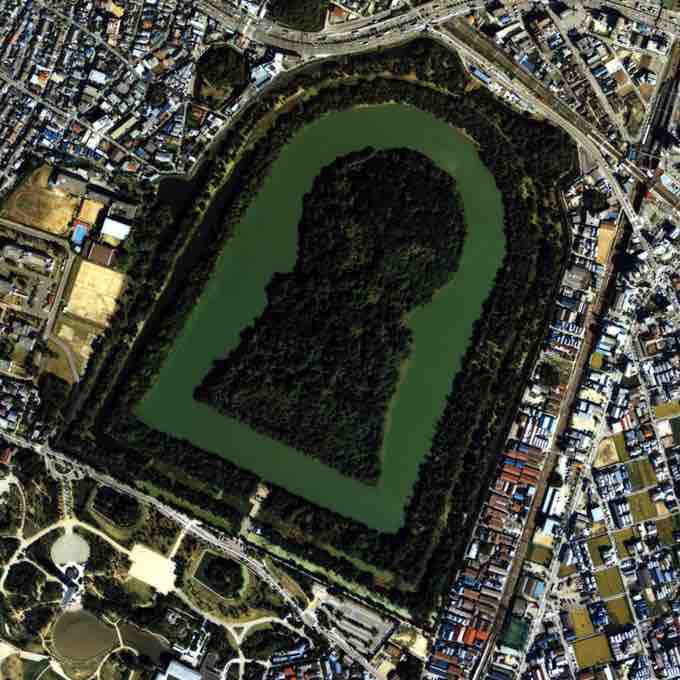Overview: The Kofun Period
The Kofun period is the oldest era of recorded history in Japan, dating from around 250 to 538 CE. It followed the Yayoi period in Japanese history; the Kofun and the subsequent Asuka periods are sometimes referred to collectively as the Yamato period. The word kofun is Japanese for the type of burial mounds dating back to this era. The close of the Kofun period saw the introduction of the Chinese system of writing as well as the widespread adoption of the Buddhist religion.

Megalithic tomb from the kofun period
Daisen Kofun, the largest of the earthen burial mounds from the Kofun period in Japan.
Kofun Culture
The Kofun period is distinguished from the following Asuka period by several cultural differences. The Kofun period is characterized by a Shinto culture which existed prior to the introduction of Buddhism. Politically, the leader of a powerful clan won control over much of west Honshū and the northern half of Kyūshū and eventually established the Imperial House of Japan. Kofun burial mounds on Tanegashima and two very old Shinto shrines on Yakushima suggest that these islands were the southern boundaries of the Yamato state. Its northernmost extent was as far north as Tainai in the modern Niigata Prefecture, where mounds have been excavated associated with a person with close links to the Yamato kingdom.
Kofun Burial Mounds
Kofun (from Middle Chinese kú, meaning "ancient", and bjun, meaning "burial mound") are defined as the burial mounds built for the people of the ruling class during the 3rd to 7th centuries in Japan, and the Kofun period takes its name from these distinctive earthen mounds. The mounds contained large stone burial chambers, and some were surrounded by moats.
Kofun come in many shapes, with round and square being the most common. A distinct style is the keyhole-shaped kofun, with its square front and round back. Kofun range in size from several meters to over 400 meters in length, and unglazed pottery figures called Haniwa were often buried under the circumference of the kofun.
The oldest Japanese kofun is said to be Hokenoyama Kofun located in Sakurai, Nara, which dates to the late 3rd century. In the Makimuku district of Sakurai, later keyhole kofuns (including Hashihaka Kofun and Shibuya Mukaiyama Kofun) were built around the early 4th century. The trend of the keyhole kofun first spread from Yamato to Kawachi (where very large kofun such as Daisenryō Kofun exist) and then throughout the country (with the exception of the Tōhoku region) in the 5th century. Keyhole kofun disappeared later in the 6th century, probably because of the drastic reformation which took place in the Yamato court; records suggest the introduction of Buddhism at this time. The last two great kofun are the Imashirozuka Kofun of Osaka, which is believed by current scholars to be the tomb of Emperor Keitai, and the IKatoyama kofun of Fukuoka, which was recorded in Fudoki of Chikugo to be the tomb of Iwai, the political archrival of Keitai.

Aerial photo of notable kofun group
The Furuichi kofun group in Osaka